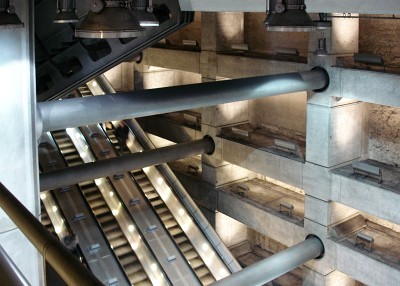geo321
Civil/Environmental
- May 17, 2015
- 85
I have been assigned a new site where they constructing a tower with 4 basements.
A diaphragm wall is bring used as a temporary structure to support the excavation during construction. A basement wall will be constructed afterwards.
Water table is at -3 meters from the ground.
My question is what are the reasons for not using a diaphragm wall a permanent basement wall ?
Is it the high watertable and the fear of having water infiltrating in the basments through the joint in the pannels of the D-wall ?
Thanks
A diaphragm wall is bring used as a temporary structure to support the excavation during construction. A basement wall will be constructed afterwards.
Water table is at -3 meters from the ground.
My question is what are the reasons for not using a diaphragm wall a permanent basement wall ?
Is it the high watertable and the fear of having water infiltrating in the basments through the joint in the pannels of the D-wall ?
Thanks


